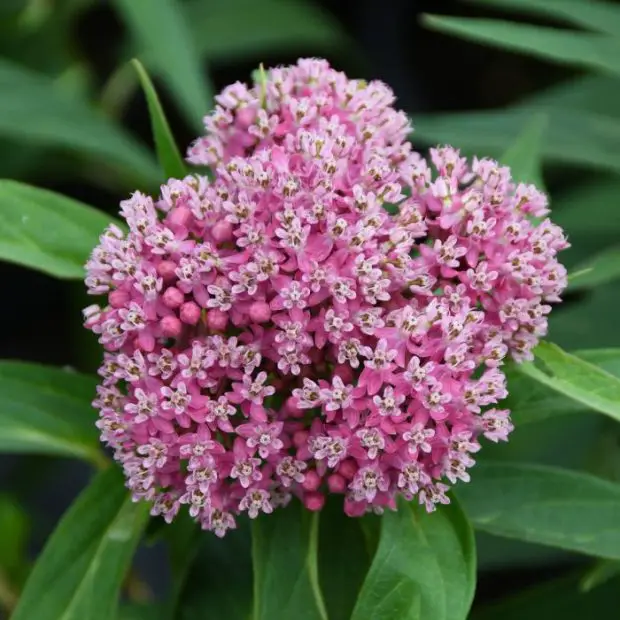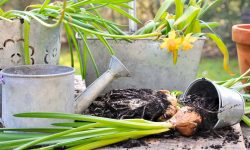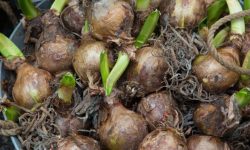Monarch butterflies depend on milkweed—not just for nectar, but as the only host plant where they lay their eggs. If you want to support their life cycle and migration journey, planting milkweed at the right time is essential.
In this seasonal guide, you’ll learn exactly when to plant milkweed based on your climate, how timing affects germination and growth, and why proper planning can make your garden a true sanctuary for monarchs. Whether you’re starting from seed or transplanting plugs, timing is everything.
Understanding the Monarch–Milkweed Relationship

Milkweed is not just another native wildflower—it’s the lifeline of monarch butterflies. Unlike other pollinators that can choose from a wide variety of host plants, monarchs are specialists. Female monarchs lay their eggs exclusively on milkweed, and once the eggs hatch, the caterpillars feed solely on its leaves. Without milkweed, monarchs simply cannot complete their life cycle.
Beyond providing food, milkweed offers monarch caterpillars a layer of natural protection. The plant’s milky sap contains toxic compounds called cardenolides, which the caterpillars ingest and store in their bodies. These toxins make both the larvae and adult butterflies distasteful to predators, offering an evolutionary advantage.
Because of habitat loss, pesticide use, and changing climate patterns, milkweed has disappeared from many landscapes across North America. By planting milkweed in your garden, especially native varieties, you directly support monarch populations and help restore vital breeding grounds along their migratory routes.
Best Time to Plant Milkweed by Season
Timing your milkweed planting correctly is essential to ensure healthy germination, strong root development, and synchronized growth with the arrival of monarchs. The best time to plant depends on whether you’re sowing seeds or transplanting young plants, as well as on your regional climate. Understanding the seasonal patterns of milkweed growth in nature helps gardeners replicate ideal conditions in home landscapes.
Spring Planting: Controlled Growth and Timed Blooms
Spring is one of the most popular and reliable times to plant milkweed, especially in cooler climates. As soil temperatures rise and daylight hours increase, conditions become ideal for seed germination and early growth. For seeds, planting in late spring—once the risk of frost has passed and soil has warmed to at least 65°F (18°C)—provides a stable window for young seedlings to develop robust root systems before summer heat arrives.
For those transplanting plugs or nursery-grown plants, early to mid-spring ensures enough time for establishment before flowering. Spring planting also allows for better control over spacing, weed competition, and watering—making it ideal for first-time growers.
Fall Planting: Mimicking Nature’s Cold Stratification
Fall is the most natural time to sow milkweed seeds, as it mirrors how seeds would behave in the wild. As native milkweed drops seeds in late summer or early fall, those seeds undergo cold stratification—exposure to cold, moist conditions that break dormancy and trigger germination in spring.
Planting milkweed seeds in fall (usually between late September and early November) allows nature to handle stratification over winter. This method works especially well in USDA Zones 3–8, where winter temperatures consistently dip below freezing. Seeds remain dormant through winter and germinate naturally as soil warms in spring.
However, fall planting is less effective in warmer zones (9–10) where winters are too mild to fully stratify the seeds. In these areas, gardeners may need to cold-stratify seeds manually in a refrigerator before planting in spring.
Summer Planting: Caution Required
While not ideal, summer planting can be done in northern regions using well-established plugs or container-grown milkweed. However, this timing comes with challenges: high heat, inconsistent rainfall, and transplant shock can all limit success. If planting in summer, provide consistent watering, mulch to retain moisture, and partial shade until the plants acclimate.
Direct sowing seeds in summer is not recommended, as soil temperatures are often too high and moisture too irregular for reliable germination.
Winter Sowing: An Emerging Alternative
Winter sowing has gained popularity among native plant gardeners. This method involves planting milkweed seeds in covered containers (like milk jugs) and leaving them outside through winter. The exposure to freezing and thawing naturally stratifies the seeds, and the mini greenhouse environment protects seedlings as they germinate in early spring. Winter sowing can be particularly effective in cold climates and offers a controlled yet low-maintenance approach.
Timing Based on USDA Hardiness Zones
Planting milkweed at the right time depends greatly on your USDA hardiness zone, as climate and seasonal patterns vary widely across regions. Understanding your zone allows you to align planting time with local frost dates, soil temperatures, and natural monarch migration routes.
In Zones 3–5 (northern states), the best time to sow seeds is in fall, between late September and November. Winters here are cold enough to naturally stratify seeds, which will germinate once spring temperatures rise. If planting in spring, start seeds indoors 6–8 weeks before your last frost date, or transplant plugs outdoors after all danger of frost has passed.
In Zones 6–8, you have more flexibility. Seeds can be sown in fall for natural stratification or started indoors in late winter for spring transplanting. Spring planting typically occurs from March to early May, depending on your local frost schedule.
In Zones 9–10 (southern and coastal areas), fall and early spring are ideal for planting milkweed plugs, but natural cold stratification is often insufficient for seeds. In these zones, refrigerate seeds for 30–60 days before spring sowing to improve germination. Plant outdoors from February through April, before extreme summer heat arrives.
By matching your planting window to your zone’s conditions, you give milkweed the best chance to establish strong roots, grow vigorously, and bloom in time to support monarchs during their migration and breeding seasons.
Starting from Seeds vs. Using Milkweed Plugs
Preparation Stage
Seeds require cold stratification to germinate—typically 30–60 days in moist, refrigerated conditions or natural overwintering outdoors. This mimics winter dormancy.
Plugs (young milkweed plants) need no pretreatment. They’re ready to plant once the soil warms, making them ideal for gardeners who want to skip early prep.
Planting Stage
Seeds should be sown outdoors in fall or stratified and planted in spring. They must be kept consistently moist during germination, which can take 10–21 days.
Plugs are transplanted in spring or early fall. They’re easier to space accurately and establish faster if watered well after planting.
Establishment Stage
Seed-grown plants may take a full season to flower, focusing first on root development. Patience is key.
Plugs typically flower sooner—sometimes in the first season—since they’re already several weeks ahead in growth.
Long-Term Results
Both methods result in hardy, perennial milkweed stands. Seeds offer affordability and native diversity, while plugs offer convenience and faster results. The best choice depends on your timeline, climate, and experience level.
Fall vs. Spring Planting: Pros and Cons
Deciding whether to plant milkweed in the fall or spring depends on your gardening goals, local climate, and whether you are sowing seeds or transplanting young plants. Both seasons offer valuable benefits, but each also presents unique challenges that gardeners should consider.
Fall planting is especially effective in colder climates, typically USDA Zones 3 through 8, because it aligns closely with milkweed’s natural lifecycle. When seeds are sown outdoors in late fall, they undergo natural cold stratification over winter, which prepares them for healthy germination in spring. This process requires little maintenance and often leads to stronger, more resilient plants. Transplanting young milkweed in early fall also gives the root system time to establish before the dormant winter period, setting the stage for vigorous spring growth. However, fall planting isn’t without risks. Heavy rains can wash away newly sown seeds, and an early frost may halt the establishment of young plants. Additionally, in warmer regions such as Zones 9 and 10, fall temperatures often aren’t cold enough to trigger proper seed dormancy, reducing effectiveness.
Spring planting, on the other hand, offers more control over timing, spacing, and environmental conditions. Gardeners can cold-stratify milkweed seeds indoors in advance, then sow them directly into prepared soil as the weather warms. This approach is especially useful in areas where natural winters aren’t cold enough to support seed stratification. Spring is also an excellent time to transplant plugs or seedlings, with increasing sunlight and milder temperatures encouraging rapid growth. While spring planting provides hands-on control, it also demands more care, particularly in keeping the soil consistently moist and managing weeds that emerge quickly as temperatures rise.
In summary, fall planting is ideal for those in colder regions who prefer a low-maintenance, nature-driven approach, while spring planting suits gardeners who want greater control and live in climates where winters are too mild for natural stratification. Both methods can produce healthy, thriving milkweed if matched to the right conditions and techniques.
Tips for Supporting Monarchs Beyond Planting Time
Supporting monarch butterflies doesn’t end once your milkweed is in the ground. To truly create a thriving habitat, gardeners can take simple, ongoing steps that enhance the environment for both monarch caterpillars and adult butterflies throughout the season.
Maintaining a consistent bloom cycle is crucial. Consider planting a mix of nectar-rich flowers that bloom at different times, such as coneflowers in midsummer and goldenrod or asters in fall. This ensures adult monarchs always have a food source, especially during migration. Avoid using pesticides or herbicides, even organic ones, as these can harm monarch caterpillars feeding on milkweed or reduce the availability of nectar-producing flowers.
Watering milkweed and nearby flowers during dry spells helps keep the habitat viable. Monarchs rely on hydrated plants for both feeding and egg-laying. Creating shallow water sources—like a small dish with pebbles or a birdbath with landing stones—can provide safe hydration points for adult butterflies during hot periods.
Deadheading faded flowers on nectar plants encourages continuous blooming, which is especially beneficial during peak migration times in late summer and early fall. If you notice aphids or other pests on milkweed, try removing them manually or using a blast of water rather than applying insecticides.
If space allows, designate a pesticide-free corner of your garden as a monarch zone with taller milkweed, native wildflowers, and even logs or stones for shelter. Regularly check the undersides of milkweed leaves for monarch eggs and tiny caterpillars, and consider protecting them from predators using mesh covers or placing potted plants indoors temporarily.
Another helpful action is to leave some milkweed stems standing after the season ends. These can overwinter beneficial insects and support early spring biodiversity, setting the stage for a more robust monarch habitat year after year.
Lastly, educating neighbors and friends about monarch conservation can multiply your impact. Sharing seeds, hosting native plant swaps, or simply posting signs that explain your butterfly-friendly garden can inspire a community effort to protect this iconic species.
Common Mistakes to Avoid
One common mistake is planting milkweed too late in the season. If sown after mid-spring, especially in colder zones, the plants may not mature in time to support monarch caterpillars before migration begins. Timing is critical—late planting can leave monarchs without sufficient food or egg-laying sites.
Another frequent error is skipping seed stratification. Many milkweed varieties, particularly native ones like Asclepias tuberosa or Asclepias incarnata, require a cold period to germinate successfully. Planting untreated seeds in warm soil often leads to poor or no germination.
Using pesticides on or near milkweed is also a serious issue. Even natural or organic sprays can harm monarch eggs and larvae. Always grow milkweed and nectar plants in a chemical-free environment to protect vulnerable stages of monarch development.
Overcrowding is another mistake. Planting too closely can lead to poor airflow and higher susceptibility to fungal diseases or aphid infestations. Spacing milkweed properly ensures healthy plants and easier monitoring for monarch activity.
Lastly, removing milkweed too early in fall can cut off vital food sources for late-migrating monarchs. Let milkweed stand until after the last frost or when it goes fully dormant to ensure maximum support through the migration season.
FAQ
When is the best time to plant milkweed seeds?
The optimal time is fall—typically from September through November—because it allows seeds to undergo natural cold stratification over winter, a requirement for many native species like Asclepias tuberosa and Asclepias syriaca. If you’re planting in spring, make sure to stratify seeds in your refrigerator for 30 to 60 days before sowing. Spring planting is usually done in March or April, depending on your USDA hardiness zone.
Can I plant milkweed in summer?
Summer planting is possible but less effective. The heat and dry conditions can stress young seedlings, and they may not establish deep roots before winter. In northern zones, summer-planted milkweed might not grow large enough in time to support late-season monarch caterpillars. If you must plant in summer, use nursery-grown transplants and keep them well-watered.
Do I need to cold-stratify milkweed seeds?
Yes, stratification mimics winter conditions that trigger germination in spring. Without it, germination rates are often very low. You can do this by placing seeds in a damp paper towel in a sealed plastic bag in the refrigerator for 4–8 weeks. Alternatively, sow outdoors in late fall and let nature take care of the stratification process.
How long does milkweed take to grow?
Milkweed seedlings typically emerge within 10 to 30 days after sowing, depending on soil temperature and moisture. Most native milkweeds are slow to mature, taking several months to grow strong roots and foliage. Many won’t bloom until their second year, especially when started from seed. Starting seeds indoors in late winter can help speed up early development.
Will milkweed come back every year?
Yes, most native milkweeds are herbaceous perennials. Once established, they die back in winter and return from underground rhizomes each spring. Avoid cutting back stems too early in fall, as they may still be supporting monarch eggs, larvae, or late-migrating adults. Established milkweed plants typically expand over time and can even self-seed if allowed.
Conclusion
Planting milkweed at the right time isn’t just good gardening—it’s an act of conservation. By understanding seasonal timing, regional climate, and monarch migration patterns, you can turn your garden into a safe haven for one of nature’s most iconic pollinators. Whether you sow seeds in fall for natural stratification or plant in spring for controlled growth, your efforts help monarchs thrive. With a little planning and care, every milkweed plant you grow becomes a vital link in the monarchs’ journey.






